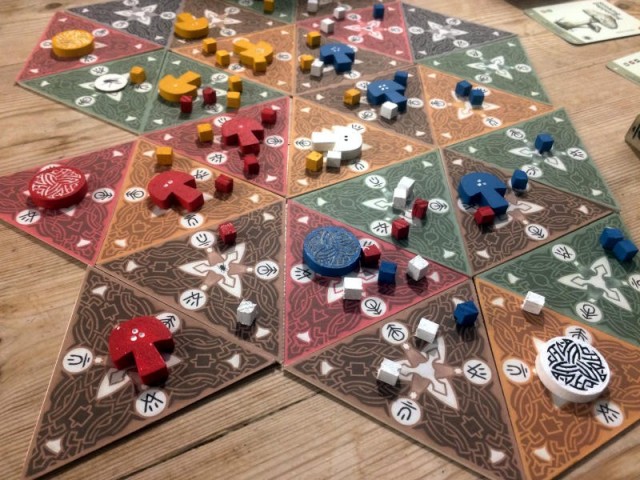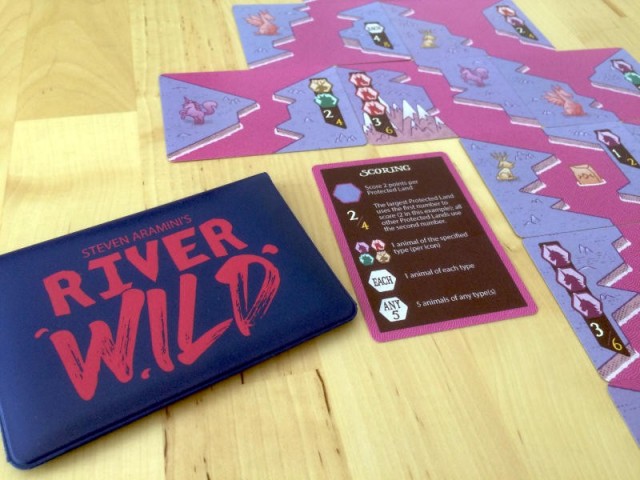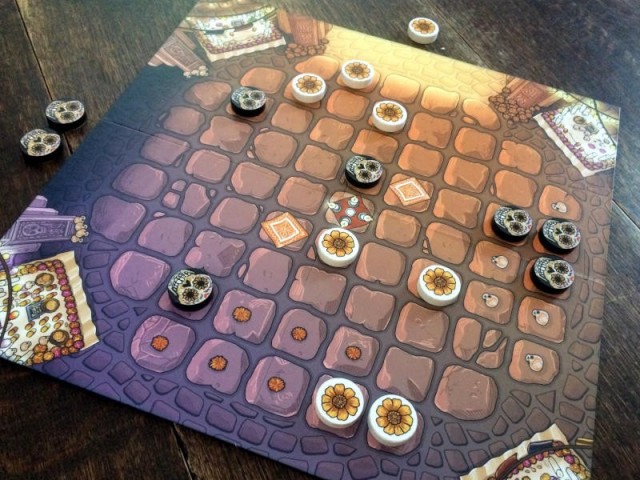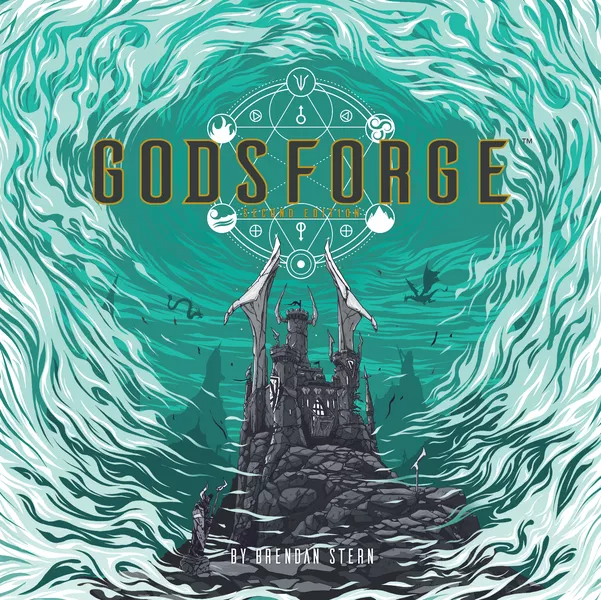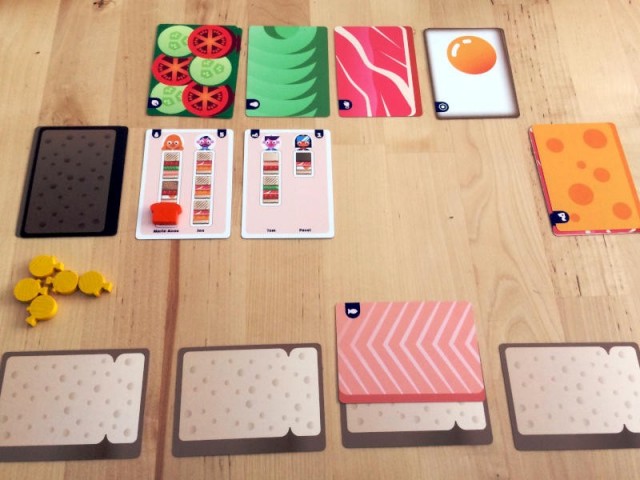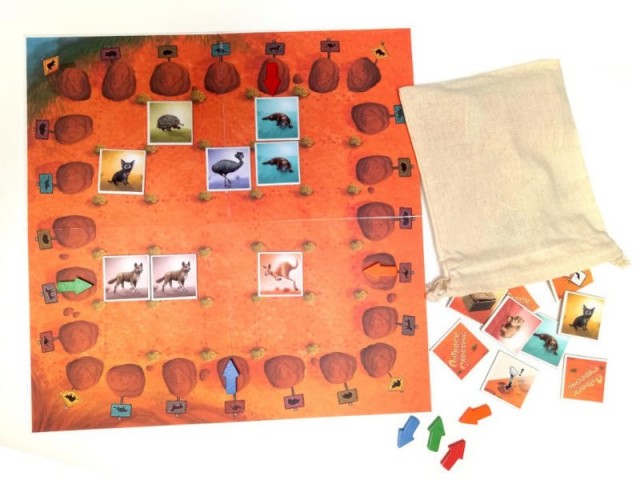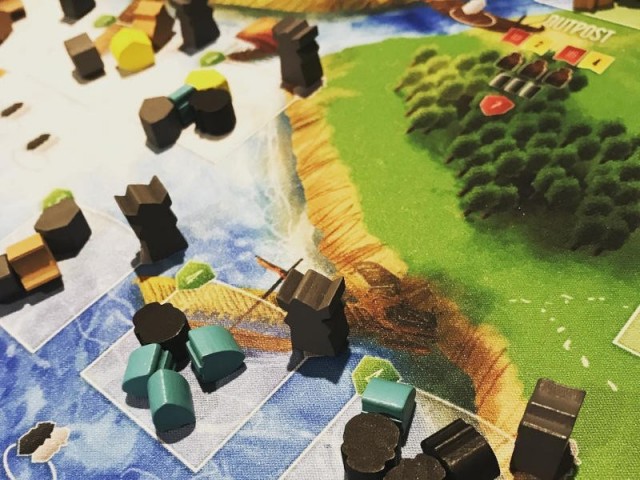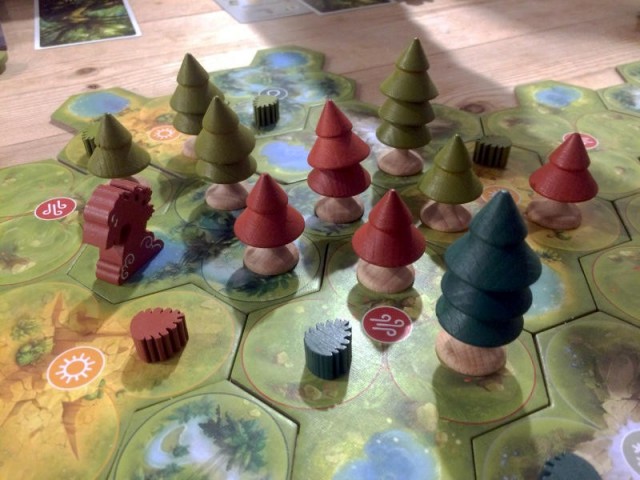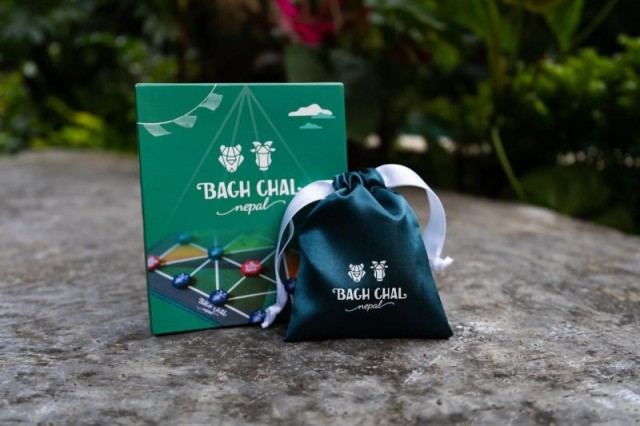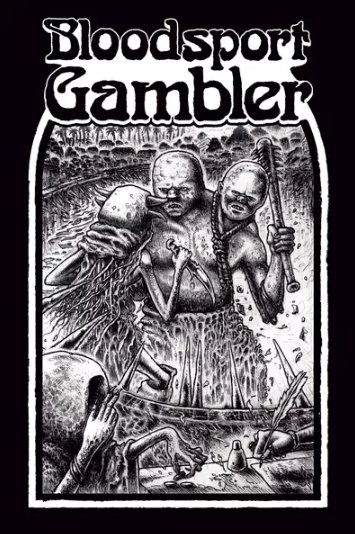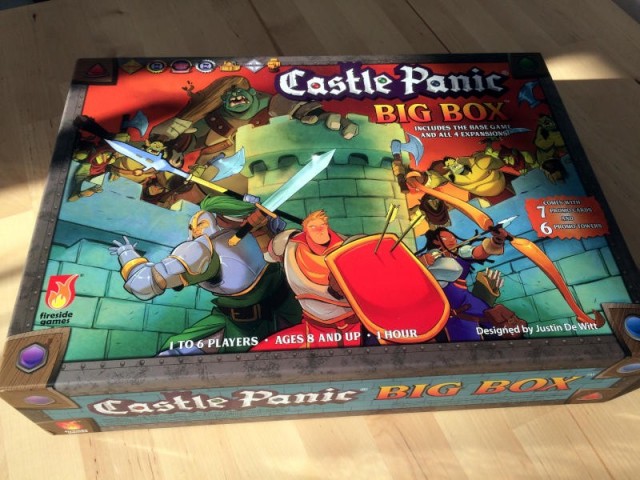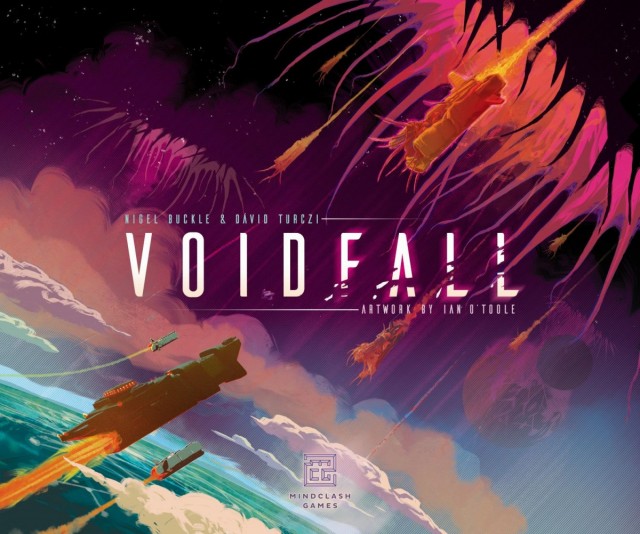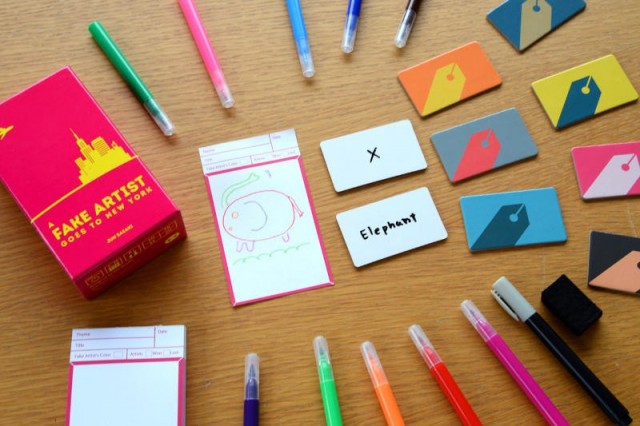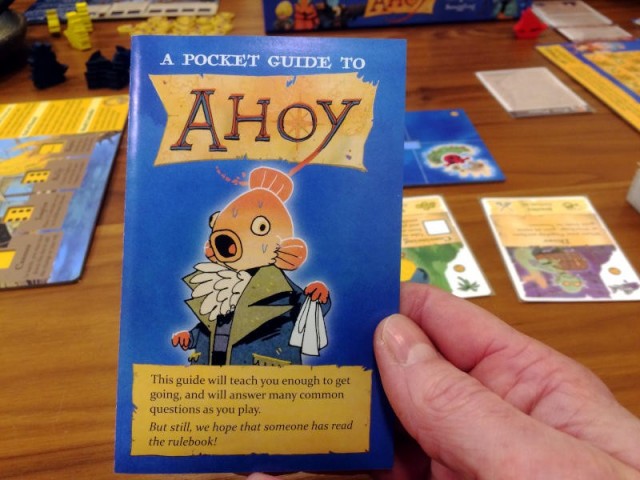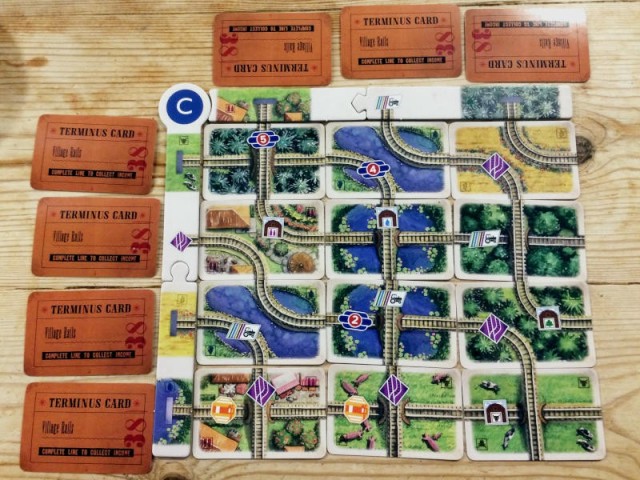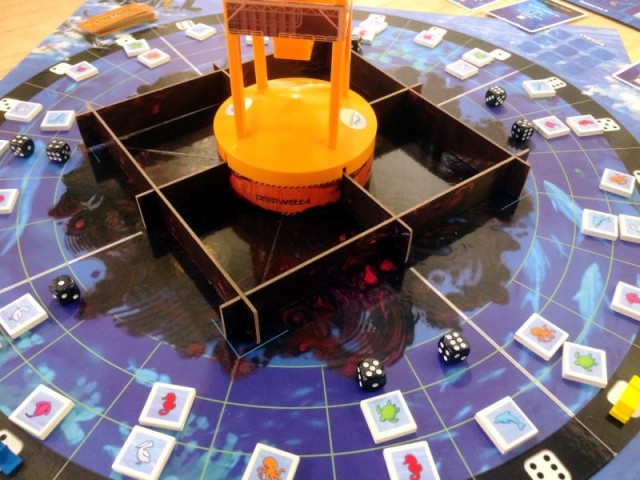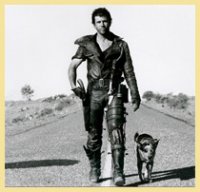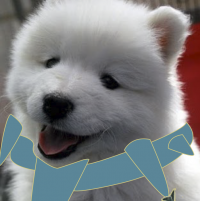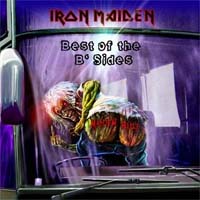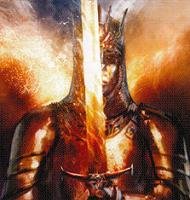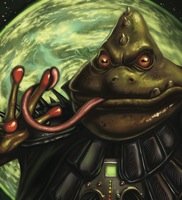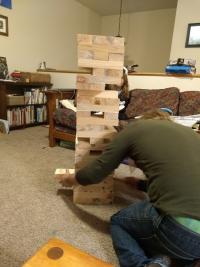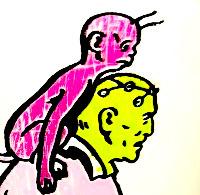Kingdom Death Review
Updated with session summary
This is a really, terribly hard thing to review. I can't even really decide if I'm reviewing a boardgame, an RPG, or a video game which doesn't come on a cartridge. Kingdom Death really doesn't fit into nice neat categories, and some of its aspects just defy... basically everything.
It is totally freaking weird and a kind of unholy Frankenstein of parts and pieces from just about everything. I have definitely worked that out, and so I think I’ll go for a review style which is more like parts cut out of other review.
Kingdom Death by the Numbers:

- 224 page rulebook with a black cover.
- 1400 cards. Mostly black backs.
- $400 list (preorder for $295). Cheaper if you got the Black Friday special.
- 11 Miniatures. Innumerable parts for tailoring your own character minis. Grey. (I primed them in black, so there.)
- Sprues. I'm not even going to count the sprues, but they haunt me in my dreams.
- a 2'x3' board, which is a dark sepia on black.
- 33 tiny plastic hands which have to be glued onto the Phoenix.
- One settlement. 7-14 Villagers with very short life expectancies.
- One box which is not only larger than the FFG coffin boxes, but printed in gloss black on matte black.
- One card divider tray (black) with dividers which is nicely designed to hold the cards, but not well enough designed to keep the board from crushing the dividers.
- A full campaign probably requires 40-50 hours to play.
By the Numbers doesn't help. Games don't cost $400. They don't come with 1400 cards (Until 7th Continent), and 224 page rulebooks only turn up in painfully detailed RPGs and fully tricked out ASL rulebooks.
And 11 miniatures? Really? Nowadays card games have more than 11 miniatures.
There might just be a teensy, tiny bit of a black obsession.
Fine. Numbers suck as a reviewing mechanism. Let's try history.
Kingdom Death Backstory: Most of this backstory is only true in my head.
Once there was a man named Adam Poots who was obsessed with black things and hands. Adam wanted to make a game to fit his exact thoughts of how a game should be made. And he wanted his game to have really nice miniatures.
So he set off to figure out how to make miniatures. He screwed up badly. Adam decided to hire all 3D sculptors who created strange poses and detail that could not actually be cast as miniatures. Unperturbed, Adam figured out weird ways to cut up sculpts and get psychotically detailed minis cast in resin.
All this while, Adam worked on his game, and play testing.
Adam and his sculptors began fleshing out the world and adding details and random body parts to his miniatures in places where normal things don't have those body parts. And lots of hands. His sculptors began to want to sculpt women with barely any clothes on because guys.
And the crowds wanted the crazy detailed new miniatures with the hands and the boobs. Adam sold his miniatures in resin to fund the game. He took the money and offered some to the high lords of Kickstarter, got a lot of money and attention. At least partially because of the boobs.
Adam then went off for 3 years to figure out how to cast his minis in styrene, and kept working on the game. Adam kept adding cards to the game, and lots of little plastic bits to represent every piece of gear mentioned on a card. Oddly enough, there are very few boobs, but people walk of floors made of faces.
There are two extra (human) (normal) figures just hidden on a sprue, but it takes a few days to figure out as people recover from the shock of opening the box and the madness of staring at all of the sprues.
5 containers of stuff showed up with all of the numbers as well as the 11 expansions which are hitting in a wave. One of those is a tree made of hands. Another is an "invisible" spider dangling a half-eaten corpse represented by a spindly mini about a foot in diameter.
Adam is not normal.
Hmm. This isn't working well. Nice for atmosfear, but not so much for explaining what Kingdom Death is. Crap. I need to present a wall of details. I don't think anyone has really laid it out in a decent review format, so I need to save you from the hour long video podcasts you would otherwise need to work this out.
Kingdom Death: The Classic Slog

Kingdom Death has 3 phases which you repeat for 25 "lantern years", or until your village of 7-14 people all die horribly. Our phases are:
- Village. You get 1-2 events, then spend the resources gained from successful hunts on further technologies and gear.
- Hunt. You run through a series of events. This is a bit like the bulk of a dungeon crawl, except you skip the minion battles and turning up tiles and just do the events.
- Showdown. You fight the boss in a big battle. There is only one in the core game, and there are only 7 bosses.
Because this is a slog, we are going to analyze these in painstaking detail (or at least until I get bored of writing.)
Wrapped around this structure is 45 million event tables. That 224 page rulebook includes 150 pages or so of events and tables. Some of those events are marked on the character and village sheets. If you check a box next to some text in bold, you drag open the book and figure out what that means. Some are based on lantern year, some are based on events like your first death and birth. Gain enough courage or understanding, and there is a page in the book for you to hop into to explain what happens.
This is totally Tales of the Arabian Nights territory. There isn't nearly as much variability, but every time you dive into the book, you'll be greeted by a full page offering some choices and D10 table rolls.
Phases again:
The Hunt Phase: Sometimes this doesn't happen because the Showdown for the round turns up in your village.
You choose 1 of 3 quarries (so far), and pick and equip your hunters. This can be any of the people in your village, and you can swap out gear. (Some hunters may have to miss a hunt because of an event.)
Then you line of a row of cards with generic hunt events as well as events specific to the thing you are hunting. You can also get some extra cards of your own to add to the hunt row for gathering herbs or minerals. Then you run through the events. The generic events make you roll on a D100 table (with 100 events.
Hunt events are….crazy. Some are good, some are bad. You can find absolutely crucial gear, or have the entire hunting party wiped out. This is where a lot of the stories come from. It goes a LOT faster than the minion killing slogs of other games. Combat is saved for something more epic.
The Showdown:
You draw from random terrain cards and then set up the giant board with the monster in the middle and the hunters somewhere. Then you start fighting. Combat is a mix of familiar, and rather odd.
Monsters have stats like: Move 5, Toughness 8, 7 Basic AI, 3 Advanced AI. That is telling me that the White Lion moves 5, requires an 8 (on a D10) to convert a hit to damage, and has 11 hit points. Each monster also has a unique AI deck which represent their attacks, as well as a unique Hit Location deck for events when they get hit. The entire Hit Location deck is used, while about half of the AI deck is used.
(Each monster also has three levels of difficulty, which bump the stats, add extra continuous powers, and whatever Legendary AI cards are.)
On a turn, you flip up a monster AI card. It tells you who it goes after, then you roll D10s to see if it hits (This can be more than 1 hit. Each hit does fixed damage (1-4 or so). Then you roll a special hit location die to see where it hit the Hunter. The Hunter has to deal with incoming damage to each location. Armor soaks the first hits, then each hit location has light and heavy wound boxes (1 of each). A Heavy Wound knocks you down making you miss your turn. A Serious Wound make you roll on the Serious Wound table for that hit location. Serious Wounds vary from instant death to permanent (nasty) effects to bleeding tokens. 5 Bleeding tokens is also death.
That's a dense but important paragraph. The end result is that it is really unusual for a boardgame, but so to a mashup of tabletop RPG combat systems, and pulls a lot from the Warhammer RPG. Then the design veers off into the REALLY clever part of showdown combat. Players have a different system.
Your weapon defines Hunter combat. Roll the X # of dice shown on your weapon. Rolls above Y (also on your weapon) are hits. For each hit, you have to roll a D10 + Z (weapon stat) to equal or exceed the monster's toughness to cause damage. Each damage causes one wound which is marked by removing the next AI card from the monster's deck.
Also (and this is a FREAKING HUGE also), each time you hit, you pull a hit location card to find out where you hit the monster. This defines a critical effect if you roll a 10 on your Toughness roll as well as a possible monster response if you hit, miss, or just because. This means that monsters get attacks outside of their turn.
Those critical effects are also pretty amazing. They can range from extra resources, to massive shifts that affect AI cards. In our second combat, the crits wore the lion down to where he was slower than us. Then one player cut off the lion's balls which caused the lion to focus entirely on him. He could then kite the lion around while we finished it off.
Even normally, the monster AI gets stupider as its deck gets smaller, you will have seen all of its moves. When it is down to just a couple of cards, you can easily predict what it will do. This system vaguely reminds me of Mansions of Madness, but this is much more complex, interesting, and completely tailored to the monster you are fighting. This is why there are only 7 monsters. Each monster comes with 50-100 cards to represent the various associated decks. It also means that two fights against the same monster do not go the same.
The Village Phase:
This is where the game has its strategic phase. The only other things that happen are that you get a random event each turn, and you get some preprogrammed events depending on the lantern year. As you can imagine, D10's and more choices are involved.
And there is gear. Armor adds armor points. Weapons have their three stats. Then there are other effect items. Also, items have little colored blocks which provide bonuses if you can match up the blocks on your gear sheet. And there are set bonuses for having complete armor sets. Suddenly, I've dropped out of my RPG, and I'm doing Diablo-style inventory and crafting weapons from resources that I harvested during my last outing.
We also get two completely different flavors of tech trees. There is a shop/crafting tech tree where shops give you access to build other shops which give you new recipes to turn your resources into gear. Resource gathering is pretty random, so you aren't planning this stuff WAY in advance. Until you are really good at the game.
The other is the Innovation deck. When you buy an Innovation, you draw two cards from this deck and keep one. The deck itself starts with just the 5 language cards. As you buy new Innovations, other Innovation cards are added to the deck to give you potential access to more and better stuff.
That's it. Tech trees and crafting. This phase TOTALLY feel like you are playing some kind of medieval computer strategy game.
Wow. That's a lot of text. I should probably say something about the components.
Kingdom Death: The bits
The components themselves are actually the weakest part of Kingdom Death. There is a lot of odd going on here, and there are some baffling and bad choices.
The minis are totally freaking amazing. They are the most detailed, stunning, complex, and ornate bits of plastic I have ever seen. There are costs. Styrene is expensive, and a single mini can take up most of a sprue. The Phoenix is 3, and the Watcher is an entire sprue. Because of the elaborate poses and detail, the minis are cut up into a LOT of small parts. A typical half-naked human might have 6-9 different parts
You will spend a lot of time huffing glue.

These are the leftover sprues AFTER the minis are put together. There are a second Watcher and 5 more Kings Men from the Bakcer only extra minis package, but that's all armor kits.
That's before you dive into the armor sprues. Each of those can build 4 figures, but there is a mix and match capability so that you can build any combination of Hunter gear. So a decent chunk of the minis are dedicated to basically playing paper dolls with minis you can design. The end result are rather detailed human minis with weird combinations of primitive armor.
This is nothing compared to the Watcher (A gigantic empty cloak covers in wreaths of smoke plumes and lanterns swinging on chains) or the Screaming Antelope (with white zombie eyes as well as a giant gaping maw/ribcage which is large enough to grab and perform a Tauntaun attack on one of the hunters.
The Phoenix itself is the standout, as it has about an 8" wingspan, and has 25 or so complex main pieces. It is one of the trickiest builds ever, but the pieces fit together with a precision that I've never before seen in any model. So they are nice, even if the armor kits are all kind of silly.
By the way. The Phoenix has 30 hands to attach. It has even has hands in

NONONONO. There should not be hands there. NOTHING has hands there. Adam is crazy. Hmmm. Because of the black and white minis scheme this isn't as obvious as I hoped. It ends up being like the world's worst game of "Where's Waldo." Sadly I think that the intent is to make the mini more NSFW as the hands cover a massive dripping anus. a cluster of 4 hands makes that SO much better.
When I was getting to painting them, I'm still not sure how they should look. The sense of wrongness that pervades the world of Kingdom Death is most pervasive here. I just stopped after priming them. Somehow the stark b/w look from the primer works for me more than a lot of the brightly colored and incredibly well painted minis I've seen so far.
There is a giant board and a single large token sheet. These are nice. The player aids are ok and useful, but REALLY thin. The worst offender with the printed bits is a completely matte finish. That picks up even the slightest bit of finger oils or stray dust quickly losing its "none more" black color. The cards are mostly black with just a tiny bit of text and a pattern on the back. They are fairly easy to sort into decks, but just look….classy. Nothing at all garish. The fronts are done in this watercolor illustrated style that is quite appealing. The resource and gear cards are the only ones with art. The layout is very clean and minimal as well. Picture, text, and details. No garish sprawl of symbols and borders. The end result is actually quite striking—all very clean and simple, but somehow maintaining an aura of elegance instead of a 70's pre-computer rough hand cut feel.
The silly bit that show up here is the insert. It is a big old hunk of vacuform plastic that nicely holds all of the cards and included dividers in place. But nothing is provided to keep the board and other printed bits above the dividers. The BGG forums are quickly spawning some foamcore creations, and my box includes an unholy creation born of 5 minutes with scissors, tape, and a Sharper Image box.

And then there is the rulebook. 224 pages softbound on nice stock in full color. And with a TON of art. Each major event has a full page illustration next to it, and bookends of 20 page comics at the front and back. It holds up its own against most of the modern $40-$50 RPG books I have. There is a weird sense of excess here. Almost like it is announcing itself as your new hobby, or shouting volumes about just how deluxe Kingdom Death is.
So why is this good?
I'm still not sure. It is a game tailor-made to breed a rabid tribe of obsessed players. It is expensive, gorgeous, and quirky. So my view may be partially bound up in the cult of Adam.
The appeal of the game probably centrally rests on the number of "Daviau moments". The first time I was aware of the concept was during a discussion of Betrayal at House on the Hill. There are matching event cards for handing yourself an item through a mirror. They pretty much never come up in the same game, but when they do, it is such a memorable moment.
Kingdom Death has "Daviau moments" wound into perhaps a third of the cards and events. All of those D10 tables have something completely deranged on the 1 or the 10. The critical hit location monster cards have some jaw droppers, and Adam clearly lacks any sort of oversight which restrains his design choices based on sense, good taste, play balance, fairness. Kingdom Death is Adam Poot's game, and it is awesomely guided by his singular vision.
Looking at his notes from the expansions, he is using the funds to add components which are used just in one tiny case. That kind of stuff just isn't practical. No one would do that. Adam is the kind of person who would replace a single 4x4 terrain tile with a full blown $60 model.

Holy crap. That's a miniature?
But perhaps it is all the world. The world is a surreal hellscape, populated by giant beasts, an alien king and his armored mutants. The tech level is practically stone/bronze age. Considering that the bulk of combats are hunts, these really do feel like a primitive tribe taking on mammoths. Everything in the game feels totally bound to the setting, and yet nothing is explained very well at all. There are giant preying mantises which will steal you genitals in the night just because.
- There is also an onion skin of layers of detail in Kingdom Death. You don't see all of the rules at once, and my brief description above doesn't go into the extra detail.
- There is a disorder deck for various permanent insanities
- Full armor sets confer a bonus.
- There are weapons masteries as you focus on one weapon.
- There are courage and understanding tracks for each character which eventually lead to events.
- I glimpsed The Hand's AI deck which makes references to multi colored auras and some keywords and concepts which I can't begin to Fathom.
- One of the expansions (due in January) changes the Hunt to a trap-filled mini dungeon crawl. Just for that creature.
- Survival Points are a sort of Grit for Kingdom Death. Every power you can spend them on requires Innovating in the village.
- There is a tech tree from hell. You have to spend your stuff to not only buy gear for fighting, but also to open new "shops", and add new innovations. During the Survivor phase you are ALWAYS getting new stuff.
Combat itself is more visceral than ANY game I've ever encountered. There is more detail here than in most RPGs, but the core rules are very simple. Weapons break and skitter away, beasts suddenly run away or charge, and sometimes we are looting corpses and picking plants in the middle of combat. Long RPG battles often devolve into back and forth die rolling of the same attack. One of the star rules here is that you cannot move through your friends. So we have to work out turn order, and even then the monster has responses which can screw up planning.
It is worth $295 (or $400)?

If you were just waiting for someone to tell you "Yes", then just go for it while it is cheap(er). You are probably already interested enough and just want to know if it good. Yes, it is good, brilliant in parts, and totally unique. The rest of this summary is to try to justify the cost in various ways.
Bits: There is $400 of stuff in the box—he isn't gouging. Quite a lot of that feels wasted by the uber high quality miniatures and the silly armor kits. Without the minis, KD would probably be a $150-$175 game, mostly in cards. There might be as much as $80 in the armor kits.
Playtime: There is only one campaign with a couple of variants. That scenario is 40 hours of play, and is definitely repayable, owing to the amount of randomness and the giant tech tree. My worry is that the bulk of the combats are with only three beasts. Those are randomized from a pool of AI cards each time, but I fear that could get somewhat same-y over time.
The expansions may fix that, at a cost. 3 or 4 of those are new things to hunt, but each expansion is like $30-$50. Each of those includes one monster mini, a sprue of gear accessories. Plus 60-150 cards, and an extra event pamphlet. Adding a new monster to KD carries a ton of baggage. On the plus side, monsters are not just a new sculpt, some stat changes and a special ability—each one of a minor/major reworking of the Showdown phase. But it'll cost you.
It also helps to have a group that is willing to commit to a single game. In my case, we have a fantasy co-op group every two weeks, as well as a group of RPG players. We've currently dropped in KD as the backup game when we don't quite have enough for our normal RPG.
Which makes sense. Kingdom Death is really more of a highly structured sandbox RPG than a boardgame. And it feels like Adam made a game JUST for me. Ponder this checklist:
- Coop
- Capricious
- Horror
- A modelling challenge
- Strong story elements
- Tech tree
I'm practically consumed by this game. It is just so different is so many little ways, and really shouldn't exist. That there are enough other people with my tastes is the big success for the Internet and that beast called Kickstarter. Compare this to other minis-heavy games on Kickstarter which I've been sucked into. So far, there has been a lot of sucking, and incredibly mediocre games or partially finished or just too awful to bear thinking about to go with the awesome minis lures. Not Kingdom Death. It is the good one.
Session Summaries
I'm not really a fan of these. Here is how our first three sessions went. We are approaching this like an RPG, spending the entire evening at KD
1. 4 of us start with a strip of cloth, a lantern and a rock. After killing our first weakened lion, we make it back to our village of 14, start our village. Craft our first bits, and go out after a full strength lion. This takes awhile and feels just a bit long, but we see that this lion keep wanting to lay in wait waiting for us to come close so we can ambush him. We learn that Dodge is our friend. Then we craft more stuff. We do narrowly avoid losing an entire hunting party. They narrowly avoided walking on the underside of the world and falling off.
2. We go after a pair of Screaming Antelopes. While these have the same stats as the lions, they are far more skittish and require some extra movement to track down during the fight. We are so glad we learned Dash as we can catch up. We also start heavily into Story and Hunt events. This is where my character has his genetalia stolen by a giant praying mantis (also becoming "Invincible"). And we both lose our first two villagers to sex, but another pair actually have a baby, which we name Crom. The village celebrates.
3. This is good, because the third session goes badly. The Butcher wanders into town, and we take him down somewhat easily. He does blind Ralphus in one eye with a lucky shot. We hunt one of those lions, which goes maybe 2-3 rounds. We've been crafting some AWESOME axes, and the Immortal Ralphus can swing a mean axe. A villager begins playing with the lanterns creating a lantern oven, but burning herself so badly that she flees the village. She is coming back in three years as The Bone Witch. We don't know what that means at all.
And then Armored Strangers walk into town. They threaten to kill 5 villagers because we have too many of us. So we fight one of them. Big guy with a halberd....and...we can barely wound him. Krag falls early. Odo gets an arm and a leg chopped off. Finally, Ralphus learns enough of the Kings Man fighting technique to actually hurt him. He gets a lucky shot to his knee which causes him to stumble enough to slow him down so we an get close without being just knocked around by that halberd. Right before he dies, he gets a pair of severe hits to Ralphus head with BOTH decapitate him. Odo and Lobelia are the only survivors, and Odo is probably not going hunting anymore, unless we find some way to heal missing limbs.
 Games
Games How to resolve AdBlock issue?
How to resolve AdBlock issue? 